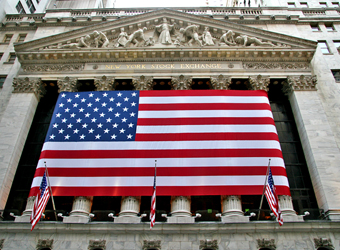U.S. stocks closed lower in light volume trade Tuesday as shares of Apple tumbled, offsetting gains in energy stocks as oil prices hit their highest in more than two years.
Apple shares closed 2.5 percent lower in their worst day since August, following a report from Taiwan’s Economic Daily, citing unidentified sources, that Apple will cut its sales forecast for the iPhone X by 40 percent in the quarter to 30 million units. Shares of Apple suppliers such as Skyworks Solutions and Micron fell 1.9 percent and 4.2 percent, respectively.
Apple has not publicly disclosed quarterly sales targets for the iPhone X, which went on sale in November. The company did not respond to a CNBC request for comment.
The SPDR S&P Retail ETF (XRT) rose more than 1 percent to hit its highest for the year, with J.C. Penney up 5.4 percent and Kohl’s up nearly 6 percent as the top advancers. XRT is now up more than 4 percent for the year.
The Mastercard SpendingPulse report showed holiday sales from Nov. 1 to Dec. 24 increased 4.9 percent this year to a record in their largest year-on-year increase since 2011. Online shopping increased 18.1 percent from the prior year.
The report said sales of electronics and appliances posted their strongest growth in 10 years, while home furniture, home furnishings and home improvement also saw significant increases. Specialty apparel and department stores saw “moderate gains,” the release said. The S&P 500 closed 0.11 percent lower at 2,680.50, with information technology closing 0.7 percent lower as the worst performer in the index. Energy and real estate investment trusts led seven sectors higher. The two sectors are among the three-worst performers in the index this year.
The S&P 500 closed 0.11 percent lower at 2,680.50, with information technology closing 0.7 percent lower as the worst performer in the index. Energy and real estate investment trusts led seven sectors higher. The two sectors are among the three-worst performers in the index this year.
“I think a lot of people are trying to get a jump on rebalancing,” said Robert Pavlik, chief investment strategist at SlateStone Wealth.
The Dow Jones industrial average closed 0.03 percent lower at 24,746.21, with Home Depot contributing the most to gains and Apple having the greatest negative impact.
Of the three major indexes, the Nasdaq composite was the worst performer, closing 0.3 percent lower at 6,936.25.
“The overall market isn’t really moving much. I think you have some specific stuff to Apple that’s dragging down most of technology,” said Ian Winer, co-head of equities at Wedbush Securities. “People are content to let the winners run into the end of the year.”
Energy stocks rose 0.8 percent as the top advancers in the S&P. U.S. crude oil futures briefly hit $60 for the first time in 2½ years and settled 2.6 percent higher at $59.97 a barrel, their highest close since June 2015. Prices rose after news of an explosion at a crude pipeline in Libya.
“Commodity prices in general are higher.
I think that’s a good sign going into next year,” said Peter Cardillo, chief market economist at First Standard Financial.
Copper futures rose more than 1 percent. U.S. gold futures for February delivery settled up $8.70 at $1,287.50 per ounce.
The Dow Jones industrial average and S&P 500 posted five straight weeks of gains last week after President Donald Trump on Friday signed a bill that cuts the corporate tax rate to 21 percent from 35 percent. The president was able to sign the bill after Congress approved another bill to keep the federal government funded through Jan. 19.
The Dow is on pace for its first nine-month winning streak since 1959 and the S&P is on track for its first nine-month winning streak since 1983.
U.S. markets were closed Monday for the Christmas Day holiday. Major European markets remained closed Tuesday for the holiday.
In Asia, the Shanghai composite closed about three-fourths of a percent higher while Japan’s Nikkei 225 fell 0.2 percent.
The S&P CoreLogic Case-Shiller 20-City Composite Home Price Index posted a 6.4 percent year-over-year gain, up from 6.2 percent the previous month, according to a Tuesday report.
The Dallas Fed general business activity index rose 10.3 points to 29.7 in December, its highest since 2006, according to a release. The Richmond Fed manufacturing index fell to 20 in December from its record high November reading of 30.
Shorter-end Treasury yields rose, while longer-end Treasury yields fell. The U.S. 2-year Treasury yield hit a high of 1.916 percent, its highest since October 2008. The Treasury also auctioned 2-year Treasury notes at a high yield of 1.922 percent, the highest since September 2008, Treasury data showed.
The 10-year yield was near 2.47 percent in afternoon trading.
The U.S. dollar index traded mildly lower near 93.26, with the euro around $1.186.
Source: CNBC
